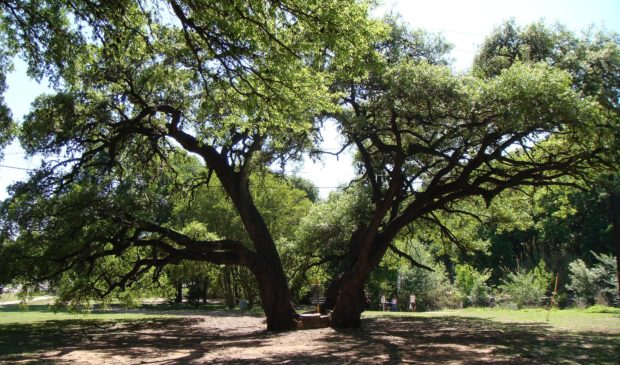Austin can now access a database dedicated to the effects of development on trees
Tuesday, April 24, 2018 by
Jessi Devenyns The City Arborist Program has just released a new, interactive tool where everyone has access to all active tree permits at any given time online.
Not all trees are being tracked on this dashboard. The city arborist only reviews and protects trees that have heritage or protected status, which is only 5 percent of the total urban forest. In response to years of complaints associated with the time it takes to file permits for tree removal and impact, City Arborist Keith Mars felt that the conversations at his office had become less about trees and more about bureaucratic logistics. So he made it his mission to change the conversation back to the trees.
“In order for us to talk more about trees, we’ve got to do a better job on the business side,” Mars told the Environmental Commission at its last meeting.
Just by putting the permits’ presence online, “We’ve looked at upwards of almost 300 percent of time saved,” explained Mars.
Not only has an electronic streamlining of the process helped with the public perception of tree permits – many of which couldn’t be easily tracked prior to the release of this online data portal – but it has helped significantly to continually track tree trends.
“Generally speaking, our tree data is a good proxy for where development is occurring,” explained Mars. According to his data, 185 tree permits were requested in District 10, and 130 were requested in District 3, where anyone driving down the street sees continual construction.
Mars noted that speeding up the process through which to request a permit is helpful for the development community, which in turn is beneficial for the trees, because that means that they are more likely to be requested for removal through the proper channels rather than being removed without the proper permitting. This year, the arborist program documented 116 cases of violation. However, according to him, “We’re actually doing a much better job this year of recording alleged violations.”
Currently, according to Mars, unless a tree’s diameter is noted on a site survey, taking punitive action for the illegal removal of trees can be difficult. “Generally, we don’t go on the cause of malicious intent. We just simply say, there was a regulated tree, it’s not there anymore.” He did note that the city can take a violator to court, but without documentation, it can be a very time-consuming process with few results.
Commissioner Mary Ann Neely noted that even a gesture of enforcement is valuable. “If there’s no penalty, there’s no reason to not do it,” she said.
Similarly, the data also show that less subdivision construction is taking place. The city arborists only reviewed 12 site plans for subdivisions last year. According to Mars, this is reflective of “how much the city is densifying, and urban development is the name of the game right now.”
Nevertheless, out of all 1,023 development-related tree permit requests, 99 percent of which were done on residential lots, “we’re saving upwards of 91 percent of trees that come forward,” said Mars.
On average, 60 percent of trees that are requested for removal or impact are saved on commercial and site plan sites.
According to Mars, most of the tree permits coming in are for impact to the trees, not outright removal, and 45 percent of those permits are for live oaks. Red oaks, sycamores and Spanish oaks follow closely behind.
However, Arizona ash may soon take the lead for removal permit requests. In Mars’ expert opinion, the removal requests will come not for development-related reasons but for health reasons. Arizona ash is a non-native tree that was planted around Austin from the 1950s to the 1980s because they are fast-growing and provide shade quickly. Unfortunately, that also means they are more vulnerable to native Texas pests, like one that is currently making its way down from North Texas, the emerald ash borer. “In all likelihood, the majority of our ashes will be gone,” said Mars.
Mars notes that there is good news here, though. “We have trees and money to help,” he said. Thanks to a grant program, anyone who loses a protected tree can apply to have two new trees gifted to them by the city. Now, according to Mars, it’s merely a question of making this information widely available.
Photo by Todd Dwyer [CC BY-SA 3.0], via Wikimedia Commons.
The Austin Monitor’s work is made possible by donations from the community. Though our reporting covers donors from time to time, we are careful to keep business and editorial efforts separate while maintaining transparency. A complete list of donors is available here, and our code of ethics is explained here.
You're a community leader
And we’re honored you look to us for serious, in-depth news. You know a strong community needs local and dedicated watchdog reporting. We’re here for you and that won’t change. Now will you take the powerful next step and support our nonprofit news organization?









